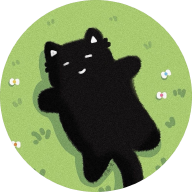As I deployed the final Hugo build files on GitHub Pages, gazing at the sleek Blowfish-themed website, I suddenly realized this digital space would become a pivotal milestone in my career. As both a designer and tech enthusiast, choosing Hugo static site generator for my portfolio wasn’t just about lightning-fast loading speeds - it embodied my commitment to digital sovereignty and the aesthetics of code.
I. The Digital Business Card Built with Code#
From the initial git clone of the Blowfish theme, this Markdown-based static site revealed extraordinary plasticity. Through Hugo’s templating system, I deconstructed my portfolio into modular components: UX projects embedded interactive prototypes via shortcodes, graphic works self-organized in adaptive gallery layouts, while technical documents showcased professionalism through syntax highlighting. Git version control chronicled the thought process behind each commit, and GitHub Actions’ automated deployment made content updates flow like brushstrokes on a digital canvas. This platform - free from WordPress bloat and SaaS template homogenization - became concrete manifestation of my design philosophy.
II. Design Evolution in the AI Tsunami#
As MidJourney-generated visuals began appearing in design pitches and Figma plugins automated responsive layouts, AI is fundamentally rewriting design’s operating system. I’ve experienced the thrill of ChatGPT generating CSS animations and DALL·E transforming text prompts into visual sketches. This technological disruption isn’t replacement but liberation: designers’ hands freed from repetitive tasks can now focus on emotional design and strategic thinking. Just as photography birthed Impressionism rather than eliminating painting, AI will inevitably catalyze new design paradigms.
III. Human-AI Collaborative Design Futures#
Throughout my website development, AI quietly evolved into a creative partner. CLIP models analyzed portfolio visuals to optimize cognitive load in information architecture, NLP auto-generated SEO keywords for project descriptions, and custom style-transfer models maintained visual consistency. Tomorrow’s designers must master two capabilities: the “meta-skill” of precisely defining design problems, and the “translation skill” of converting AI outputs into human-centric solutions.
As sunset light filters through my monitor onto the keyboard, this code-built digital garden stands ready to receive visitors. More than an archive of past work, it will become a laboratory for exploring AI’s design frontiers. In this new era of human-machine symbiosis, true design competitiveness may lie in our wisdom to master tools without being mastered by them.

